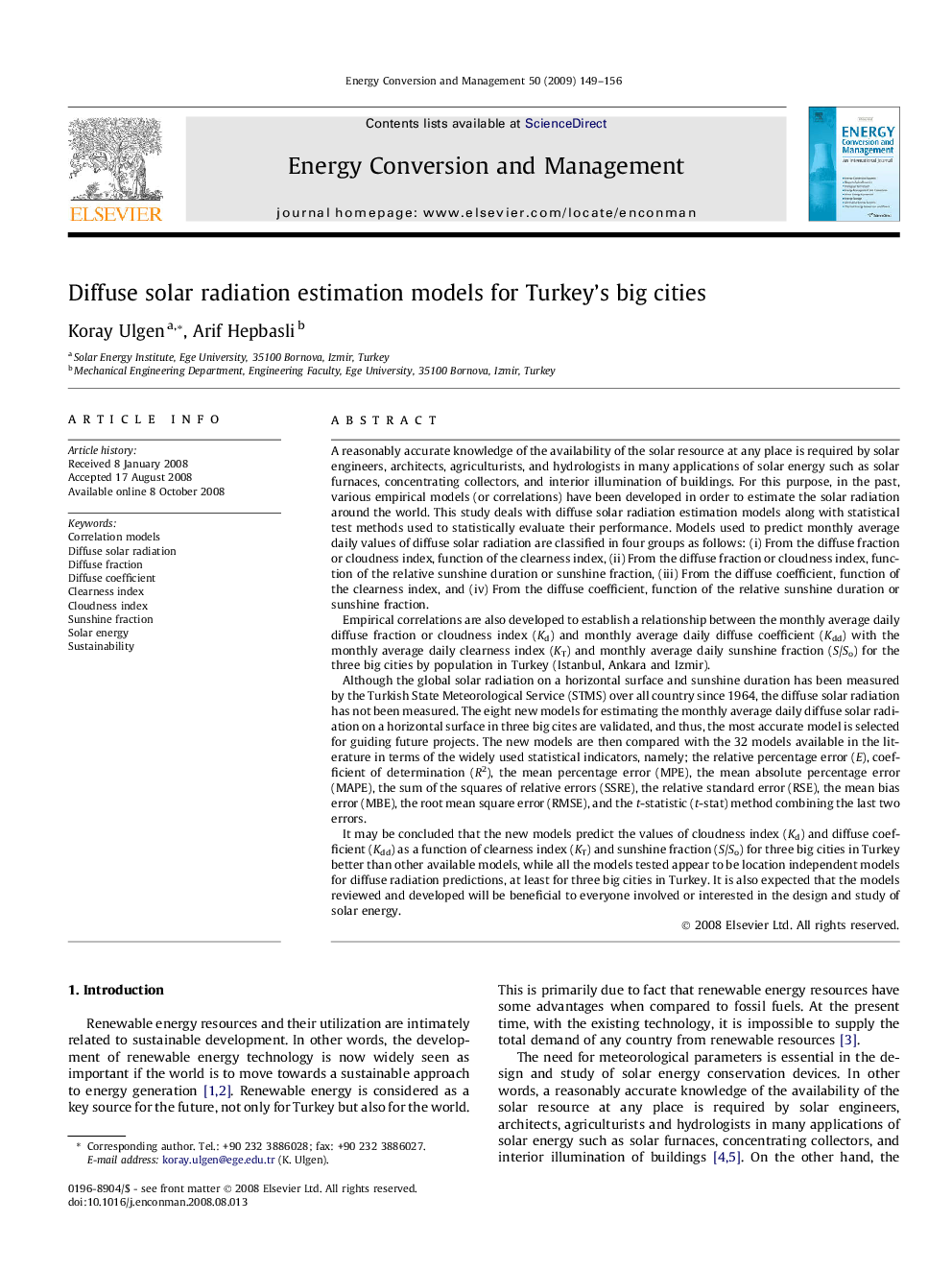| کد مقاله | کد نشریه | سال انتشار | مقاله انگلیسی | نسخه تمام متن |
|---|---|---|---|---|
| 765238 | 897027 | 2009 | 8 صفحه PDF | دانلود رایگان |

A reasonably accurate knowledge of the availability of the solar resource at any place is required by solar engineers, architects, agriculturists, and hydrologists in many applications of solar energy such as solar furnaces, concentrating collectors, and interior illumination of buildings. For this purpose, in the past, various empirical models (or correlations) have been developed in order to estimate the solar radiation around the world. This study deals with diffuse solar radiation estimation models along with statistical test methods used to statistically evaluate their performance. Models used to predict monthly average daily values of diffuse solar radiation are classified in four groups as follows: (i) From the diffuse fraction or cloudness index, function of the clearness index, (ii) From the diffuse fraction or cloudness index, function of the relative sunshine duration or sunshine fraction, (iii) From the diffuse coefficient, function of the clearness index, and (iv) From the diffuse coefficient, function of the relative sunshine duration or sunshine fraction.Empirical correlations are also developed to establish a relationship between the monthly average daily diffuse fraction or cloudness index (Kd) and monthly average daily diffuse coefficient (Kdd) with the monthly average daily clearness index (KT) and monthly average daily sunshine fraction (S/So) for the three big cities by population in Turkey (Istanbul, Ankara and Izmir).Although the global solar radiation on a horizontal surface and sunshine duration has been measured by the Turkish State Meteorological Service (STMS) over all country since 1964, the diffuse solar radiation has not been measured. The eight new models for estimating the monthly average daily diffuse solar radiation on a horizontal surface in three big cites are validated, and thus, the most accurate model is selected for guiding future projects. The new models are then compared with the 32 models available in the literature in terms of the widely used statistical indicators, namely; the relative percentage error (E), coefficient of determination (R2), the mean percentage error (MPE), the mean absolute percentage error (MAPE), the sum of the squares of relative errors (SSRE), the relative standard error (RSE), the mean bias error (MBE), the root mean square error (RMSE), and the t-statistic (t-stat) method combining the last two errors.It may be concluded that the new models predict the values of cloudness index (Kd) and diffuse coefficient (Kdd) as a function of clearness index (KT) and sunshine fraction (S/So) for three big cities in Turkey better than other available models, while all the models tested appear to be location independent models for diffuse radiation predictions, at least for three big cities in Turkey. It is also expected that the models reviewed and developed will be beneficial to everyone involved or interested in the design and study of solar energy.
Journal: Energy Conversion and Management - Volume 50, Issue 1, January 2009, Pages 149–156